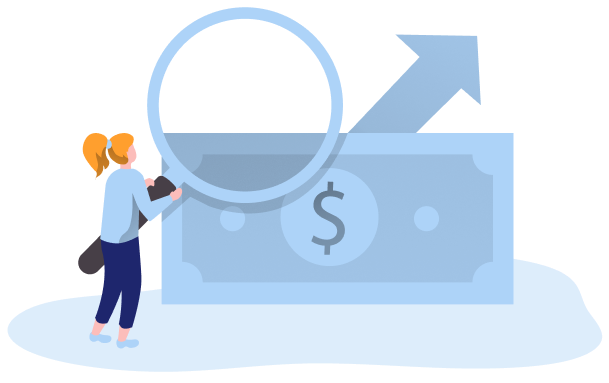FinOps Automation for Real-Time Cloud Cost Control & Visibility

Learn what FinOps automation can do for your business
FinOps automation replaces manual cloud cost management with intelligent, real-time processes that run behind the scenes. Instead of spreadsheets and reactive reviews, you get automated cost optimization that scales with your infrastructure and governance needs.
Our service helps engineering and finance teams monitor cloud usage, enforce budgets, and reduce unnecessary spend, automatically.
Key capabilities include:

Real-time cost monitoring and alerting

Automatic resource right-sizing and scaling

Intelligent rate optimization (spot instance utilization, commitment planning)

Accurate cost allocation by team, project, or environment
Why do you need FinOps automation?

Manual tagging, reporting, and usage reviews drain valuable engineering and operational resources. FinOps automation replaces these labor-intensive workflows with policy-driven logic that operates continuously in the background, ensuring consistent tagging, accurate attribution, and repeatable cost allocation practices.

FinOps automation eliminates the need for end-of-month reconciliations and manual data aggregation. With continuous data ingestion and real-time processing, teams can access actionable cost intelligence through pre-configured dashboards and alerts—accelerating decision-making and freeing up time for higher-impact work.

Errors in budget forecasting, tag misalignment, or delayed anomaly detection can create cascading financial and operational issues. Automated systems enforce tagging standards, apply rules-based cost controls, and detect anomalous behavior using predefined thresholds and AI-based pattern recognition.

As organizations expand their cloud footprint, traditional cost management processes fail to scale. FinOps automation enables centralized control across dozens or hundreds of cloud accounts, projects, and teams, applying consistent governance, policy enforcement, and optimization without increasing operational overhead.

Different teams often use different tools, naming conventions, and spending habits. Automation introduces structure and standardization by enforcing consistent tagging schemas, budget rules, and cloud usage policies across services, teams, and providers.As organizations expand their cloud footprint, traditional cost management processes fail to scale. FinOps automation enables centralized control across dozens or hundreds of cloud accounts, projects, and teams, applying consistent governance, policy enforcement, and optimization without increasing operational overhead.
- Reduce manual efforts
- Save time and resources
- Minimize human error
- Scale with ease
- Standardize your processes

Manual tagging, reporting, and usage reviews drain valuable engineering and operational resources. FinOps automation replaces these labor-intensive workflows with policy-driven logic that operates continuously in the background, ensuring consistent tagging, accurate attribution, and repeatable cost allocation practices.

FinOps automation eliminates the need for end-of-month reconciliations and manual data aggregation. With continuous data ingestion and real-time processing, teams can access actionable cost intelligence through pre-configured dashboards and alerts—accelerating decision-making and freeing up time for higher-impact work.

Errors in budget forecasting, tag misalignment, or delayed anomaly detection can create cascading financial and operational issues. Automated systems enforce tagging standards, apply rules-based cost controls, and detect anomalous behavior using predefined thresholds and AI-based pattern recognition.

As organizations expand their cloud footprint, traditional cost management processes fail to scale. FinOps automation enables centralized control across dozens or hundreds of cloud accounts, projects, and teams, applying consistent governance, policy enforcement, and optimization without increasing operational overhead.

Different teams often use different tools, naming conventions, and spending habits. Automation introduces structure and standardization by enforcing consistent tagging schemas, budget rules, and cloud usage policies across services, teams, and providers.As organizations expand their cloud footprint, traditional cost management processes fail to scale. FinOps automation enables centralized control across dozens or hundreds of cloud accounts, projects, and teams, applying consistent governance, policy enforcement, and optimization without increasing operational overhead.
Curious how FinOps automation would work in your cloud environment?
How does FinOps automation work?
Our platform connects directly to your cloud providers (AWS, Azure, GCP) and continuously monitors spend, usage, and performance. Then it applies optimization logic in real time based on your policies, budgets, and business rules.

Automated monitoring and visibility
FinOps automation tools ingest billing data, cloud telemetry, and resource metadata in near-real time. This data is normalized, enriched, and visualized through cost dashboards, usage heatmaps, and forecasting reports that provide clarity across business units.

Automated usage optimization
The system continuously analyzes historical and real-time workload metrics to identify idle, underutilized, or misconfigured resources. Based on thresholds and policies, it can trigger scaling actions, terminate unused resources, or recommend architectural adjustments.

Automated rate optimization
FinOps automation platforms compare current usage patterns against pricing models to select the most cost-effective options—such as reserved instance commitments, spot market participation, or savings plans. Recommendations and actions are aligned with performance SLAs and availability needs.
Key advantages of using FinOps automation platforms
Increased
efficiency
By eliminating time-consuming tasks like data wrangling, cost allocation, and variance analysis, FinOps teams can focus on strategic financial governance and cost innovation.
Cost
optimization
With granular visibility and automated enforcement of cost policies, companies achieve material savings by rightsizing workloads, optimizing rates, and eliminating unused cloud services.
Real-time
insights
Stream processing and event-based alerts ensure that cost anomalies, policy breaches, or budget overruns are surfaced immediately.
Better automation
capabilities
Modern FinOps platforms are extensible and continuously evolving. As AI models improve, so do predictive recommendations, anomaly detection precision, and dynamic cost control capabilities.
Want to see this in action?
Common challenges that FinOps automation can solve
Understanding complex cloud pricing models
Cloud pricing is inherently dynamic, with variables like region, instance type, storage tier, and data transfer fees. Automation tools abstract this complexity, ensuring that workloads are aligned with the most cost-effective pricing constructs.
Managing dynamic cloud environments
In environments with ephemeral workloads or frequent infrastructure changes, automation ensures consistent policy enforcement, real-time scaling, and resource decommissioning without human oversight.
Shifting from reactive to proactive cost management
Rather than reacting to cost overruns post hoc, automation enables proactive alerts and real-time governance, empowering teams to take preventive actions based on intelligent forecasts and behavioral triggers.
Multi-cloud cost management
Tracking and controlling spend across providers is simplified with a unified data layer that normalizes billing structures and enables consistent tagging, attribution, and reporting across AWS, Azure, GCP, and others.
Frictionless automation with zero engineering effort
Our no-code solution works out of the box. Connect your cloud accounts, configure your policies, and let the automation handle the rest. No custom scripts. No handoffs.
Once implemented, our FinOps solution keeps improving. Automated workflows continuously assess, adjust, and optimize based on real-time data and historical trends.

Run scheduled audits to uncover inefficiencies

Refine tagging and team-based cost allocation as organizational structures evolve

Adjust optimization thresholds in real time as usage patterns shift

Deliver tailored cost-saving recommendations at the service or team level
No scripts. No handoffs. Just results.
Frequently Asked Questions
How does FinOps automation improve cost management?
By proactively enforcing usage policies and identifying savings opportunities in real time, FinOps automation prevents overspend before it happens and improves forecasting and cost governance.
What is the role of AI in FinOps automation?
AI models detect anomalies, predict usage patterns, and recommend optimizations based on historical data and behavioral trends. They refine automation workflows over time for better accuracy and efficiency.
How quickly can we see results?
Most customers see measurable cost reductions and workflow improvements within 1–2 months. Time-to-value depends on cloud footprint complexity and existing FinOps maturity.
How does FinOps automation work across multiple cloud providers?
Naviteq’s platform integrates with AWS, Azure, and Google Cloud, enabling centralized governance, unified cost allocation, and policy enforcement across multi-cloud environments.
What types of organizations benefit most from FinOps automation?
FinOps automation is especially valuable for fast-scaling SaaS companies, cloud-native enterprises, and businesses managing complex cloud environments across teams, regions, or business units.
Do we need in-house DevOps expertise to use Naviteq’s automation?
No. Naviteq offers a no-code solution designed to run out of the box. You don’t need custom scripts or DevOps resources to benefit from full FinOps automation.
What makes Naviteq’s FinOps solution different from native cloud tools?
While native tools like AWS Cost Explorer focus on visibility, Naviteq provides intelligent, policy-driven execution. Our platform automates optimization—beyond monitoring.
It’s time to take control of your cloud costs
Let’s simplify, automate, and optimize your cloud financial operations without adding complexity.
Fill out the form below to learn how Naviteq’s FinOps automation solution can help you reduce waste, improve visibility, and scale your cloud cost strategy.